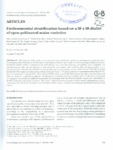Por favor, use este identificador para citar o enlazar este ítem:
http://www.alice.cnptia.embrapa.br/alice/handle/doc/491630Registro completo de metadatos
| Campo DC | Valor | Lengua/Idioma |
|---|---|---|
| dc.contributor.author | PACHECO, C. A. P. | pt_BR |
| dc.contributor.author | SILVA, H. D. | pt_BR |
| dc.contributor.author | SANTOS, M. X. dos | pt_BR |
| dc.contributor.author | GUIMARAES, P. E. de O. | pt_BR |
| dc.contributor.author | PARENTONI, S. N. | pt_BR |
| dc.contributor.author | GAMA, E. E. G. e | pt_BR |
| dc.contributor.author | SCAPIM, C. A. | pt_BR |
| dc.contributor.author | MEIRELLES, W. F. | pt_BR |
| dc.contributor.author | CARVALHO, H. W. L. de | pt_BR |
| dc.contributor.author | VIEIRA JUNIOR, P. A. | pt_BR |
| dc.date.accessioned | 2011-04-10T11:11:11Z | pt_BR |
| dc.date.available | 2011-04-10T11:11:11Z | pt_BR |
| dc.date.created | 2009-01-08 | pt_BR |
| dc.date.issued | 2008 | pt_BR |
| dc.identifier.citation | Crop Breeding and Applied Biotechnology, Londrina, v. 8, n. 4, p. 259-264, 2008. | pt_BR |
| dc.identifier.uri | http://www.alice.cnptia.embrapa.br/alice/handle/doc/491630 | pt_BR |
| dc.description | The objective of this study was to assess the representativeness of the test environments used by the maize breeding program of Embrapa in the first phase of genotype evaluation. Ear weight of 378 hybrids from a diallel of 28 open-pollinated varieties (OPVs) evaluated in ten environments were used. The following environments were evaluated: two growing seasons (1991-92 and 1992-93), at three locations (Sete Lagoas, MG, Londrina, PR, and Goiania-GO); in two growing seasons (1991/92 and 1993/94) in Aracaju-SE; and in two growing seasons (1992-93 and 1993-94), in Ponta Grossa-PR. The complex part of the interaction accounted for nearly 75% of the genotype by environment interaction (G x E). The environments of Londrina-91/92, Ponta Grossa-93/94 and Aracaju-93/94 differed from the others and also from each other, as shown by stratification analysis. The phenotypic correlation between genotype means in the pairwise grouped environments. interpreted as coefficient of genotypic determination, indicated that non-genetic causes were responsible for 64.40% of the mean phenotypic variances. The results confirmed the discrimination of three major environmental groups, representing the Northeast (Aracaju). Central Southeast (Sete Lagoas, Goiania and Londrina) and South (Ponta Grossa) regions. | pt_BR |
| dc.language.iso | eng | eng |
| dc.rights | openAccess | eng |
| dc.subject | Interação genótipo x ambiente | pt_BR |
| dc.subject | Estratificação de ambiente | pt_BR |
| dc.title | Environmental stratification based on a 28 x 28 diallel of open-pollinated maize varieties. | pt_BR |
| dc.type | Artigo de periódico | pt_BR |
| dc.date.updated | 2018-05-24T11:11:11Z | pt_BR |
| dc.subject.thesagro | Milho | pt_BR |
| riaa.ainfo.id | 491630 | pt_BR |
| riaa.ainfo.lastupdate | 2018-05-24 -03:00:00 | pt_BR |
| dc.contributor.institution | CLESO ANTONIO PATTO PACHECO, CNPMS; Heyder Diniz Silva, Universidade Federal de Uberlândia; Manoel Xavier dos Santos, Embrapa Milho e Sorgo; PAULO EVARISTO DE O GUIMARAES, CNPMS; SIDNEY NETTO PARENTONI, CNPMS; Elto Eugênio Gomes e Gama, Embrapa Milho e Sorgo; Carlos Alberto Scapim, Universidade Estadual de Maringá; WALTER FERNANDES MEIRELLES, CNPMS; PEDRO ABEL VIEIRA JUNIOR, SNTEEN Campinas. | pt_BR |
| Aparece en las colecciones: | Artigo em periódico indexado (CNPMS)  | |
Ficheros en este ítem:
| Fichero | Descripción | Tamaño | Formato | |
|---|---|---|---|---|
| Environmentalestratification.pdf | 4,91 MB | Adobe PDF |  Visualizar/Abrir |









